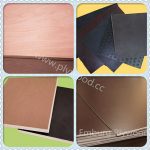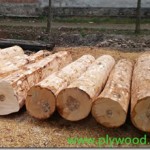Several Tips For Choosing Plywood For DIY (Do-It-Yourself)
Today, the DIY (Do-It-Yourself) trends are still fast growing . Homeowners prefer to making home improvement on their own .
Whether you are building, redecorating or repairing, plywood are required . Large quantity of plywood are distributed to DIY Market everyday .
Plywood can be used for DIY furniture, platform, flooring, roofing, lining and panelling of interior, as well as exterior wall . In DIY markets, there are different kinds of plywood such as interior plywood, exterior plywood, marine plywood and fancy plywood (decorating plywood) .
In a supplier’s view, do-it-yourselfers should know the following when they buy plywood :
(1) If the plywood may be exposed to weather/water, choose exterior WBP plywood; If exposed to home moisture only, use interior plywood.
(2) Usually, it’s not necessary for you to choose high grade plywood . If you require only one good side of plywood, the selection of the plywood with good face and worse back can save costs. If the plywood will be invisible in your finished application, you can use plywood with worse face/back .
(3) If the plywood (especially after being cut into small pieces ) will be exposed to weather / water / moisture, painting the edges of plywood can extend the life of plywood . This can prevent edges from absorbing moisture/water .
(4) If you require better plywood durability for your usages , choose exterior WBP plywood regardless of whether the plywood is used for interior or exterior .





Helpful ! Thanks !
Hello
I would like to share with you a link to your site
The other day, I needed to make a couple of repairs to my house. I had a sheet of plywood that I bought several years ago, and I got it out of the shed.
I didn’t work at a plywood plant when I bought the sheets, but I do now.
I noticed that there were dye marks on my plywood. The ones that go across the grain are okay, because they only mean that the veneer had to make two trips through the drying kilns before the plywood was assembled.
But I was shocked to see other dye marks going WITH the grain. This indicates a blown board. IOW, the glue holding the veneers together did not bond correctly.
This board should have been rejected at the manufacturing plant. I’ll shop more carefully next time.
Very useful information.
Great tips, very informative.
I think exterior plywood is more versatile. Even if you’re not putting it outside, you should still use the exterior variety if it’s going to be around water. Like you said, that’s why it’s so important to know what you’re using the plywood for before you buy it.